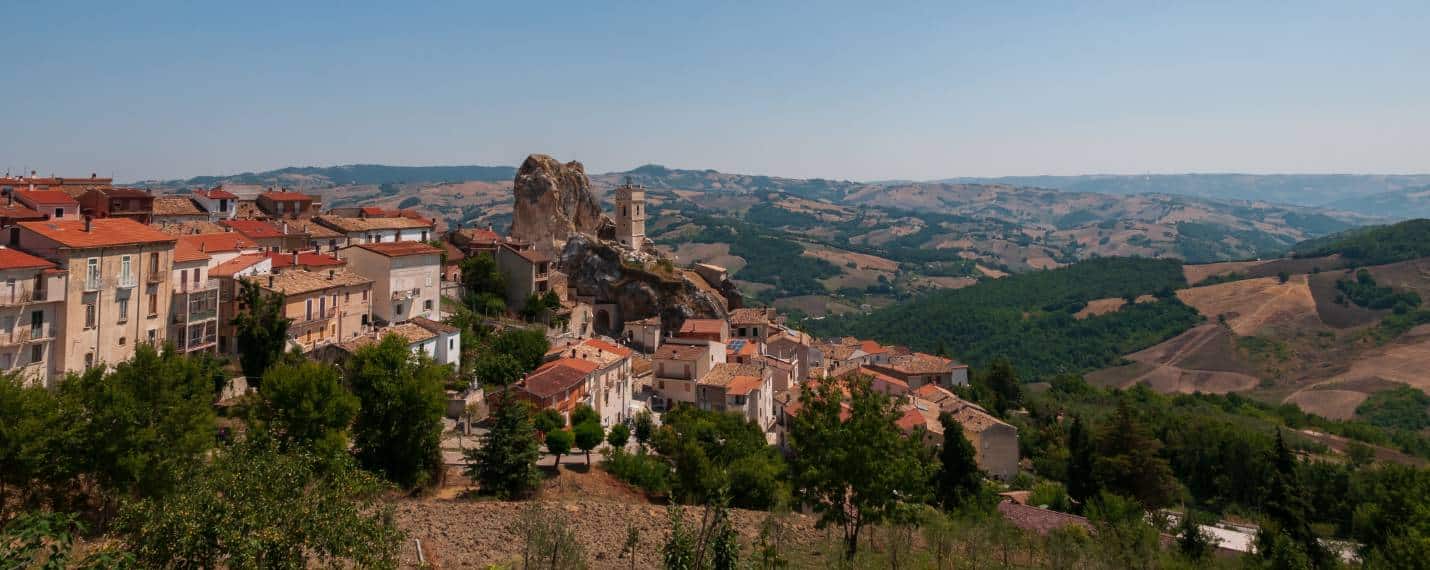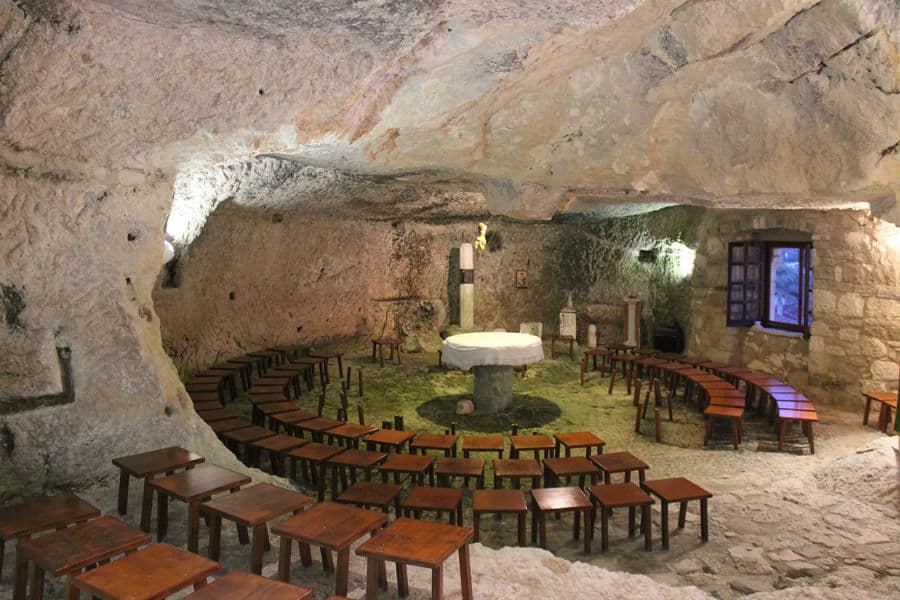between the most large caves which were once used as dwellings from the first inhabitants of Pietracupa, we must remember the Rock Church. This cave, as the other of Morgia, was used for different uses in the course of time. Very probably at the beginning, between the VI and VII century d.C., the cave belonged to a monastery, a community of people who, in the chasing of invasions, in the absence of any protection, they trusted in solitary places imploring the mercy of God. Then, toward the year 1000, even on top of Morgia is built a castle in defense of the valley. The Cenobite monks moved in an abbey in contrada S. Peter, and cave largest settled a guard post, while in 1360 it built for the population a church dedicated to S. Gregorio.
When this was destroyed by an earthquake in December 1456, it is very likely that the cave has been returned to its sacred function: in the country has been remembered as “old” church until a few years ago. It remained until the church of San Gregorio was not rebuilt around one hundred years after: in 1575 is attested again the existence in Pietracupa of archipresbiteriale church of S. Gregorio. The cave was then used as a court of the baron and as a prison. Still today are visible signs of the judicial systems of the era such as incatenamenti and portions of cord. It does not appear that have ever been carried out death sentences, which however took place outdoors, for edification and admonition of the population.
When the feudality ended, the cave became dwelling, stable, warehouse until December 1943, when Pietracupa found himself on the front line between the VIII English army, which had landed at Termoli and Germans of 16ª Panzer Division in retreat toward Cassino that, after Pietracupa, had occupied Torella. In those days the cave welcomed the entire population atterrita by continuous shelling, referred various houses of the country still show the tracInterno of Grottace.
In the seventies, with the coming of the parish priest Monsignor Orlando Di Tella, the cave has become the place of prayer of the Community, rock church as at the beginning, improperly called “Crypt”. Among the most important works we can find in its inside, there is a beautiful crucifix of 1500 without arms, which seems to want to say to all: “You, my arms”.
The circular altar is still composed of the millstone of the old mill of the country and the conformation of the cave places around the altar for the entire community. There are preserved a baby Jesus of olive wood, to natural greatness, coming from Nazareth, together with a chalice, also of wood (S. Joseph was a carpenter), bought at Betlem, both personally blessed by Pope John Paul II; are exposed and used in the Christmas festivities in the presence of personalities of the media, with the participation of zampognari between torches, streamers and music composed precisely for the country.



